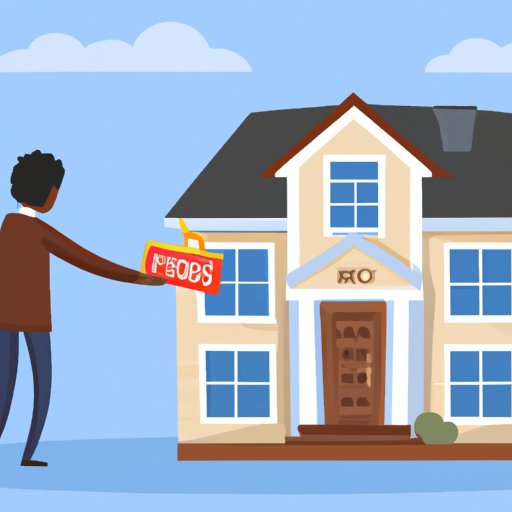
I. Introduction
Buying a home is a big decision and can feel overwhelming, especially when it comes to getting a mortgage. A mortgage is a loan used to purchase a home, and for many people, it’s the largest financial transaction they will ever make. In this article, we’ll cover the steps you need to take to get a mortgage, including researching and comparing mortgage options, improving your credit score, calculating and budgeting for mortgage payments, saving for a down payment, negotiating mortgage terms and reducing closing costs, choosing the right lender, and navigating the mortgage application process.
II. Researching and Comparing Mortgage Options
When it comes to getting a mortgage, it’s important to shop around and compare your options. Start by researching different types of mortgages, including fixed-rate, adjustable-rate, FHA, and VA loans. Then, compare interest rates, fees, and other terms from different lenders. Use online tools and calculators to help you compare different mortgage options.
To evaluate mortgage lenders, look for ones with a good reputation, competitive rates, and a range of mortgage products. Check online reviews and ask friends and family for recommendations. Don’t be afraid to ask lenders questions and compare their responses.
III. Improving Credit Scores to Qualify for Better Mortgage Rates
Your credit score plays a big role in qualifying for a mortgage and determining your interest rate. A better credit score means better rates and lower monthly payments. To improve your score, pay bills on time, pay down debt, and dispute errors on your credit reports. A good credit score can save you thousands of dollars over the life of your mortgage.
IV. Calculating and Budgeting for Mortgage Payments
Mortgage payments are calculated based on a variety of factors, including interest rates, loan terms, and down payment amounts. To calculate your mortgage payment, use an online calculator or consult with a mortgage expert. It’s also important to budget for other expenses associated with homeownership, including property taxes, insurance, and maintenance costs.
To reduce mortgage expenses, consider choosing a shorter loan term or making extra payments. Paying off your mortgage early can save you tens of thousands of dollars in interest.

V. Saving for a Down Payment and Minimizing Additional Costs
A down payment is money paid upfront to reduce the amount of your mortgage loan. Most lenders require a down payment of at least 5%, but aiming for 20% can help you avoid private mortgage insurance (PMI) and get better rates. To save for a down payment, set a budget, cut expenses, and consider alternative sources of funding, such as gifts from family or down payment assistance programs.
Other costs associated with buying a home include inspection fees, closing costs, and moving expenses. To minimize these costs, negotiate with sellers and lenders, shop around for service providers, and budget carefully for expenses.
VI. Negotiating Mortgage Terms and Reducing Closing Costs
There are creative ways to negotiate mortgage terms and reduce closing costs. For example, you can negotiate with sellers to pay a portion of your closing costs or ask the lender to waive certain fees. A mortgage broker or real estate agent can also help negotiate on your behalf.
VII. Choosing the Right Lender and Navigating the Mortgage Application Process
Choosing the right lender is crucial when it comes to getting a mortgage. Look for a lender with a good reputation, competitive rates, and a range of mortgage products. Don’t be afraid to ask questions and compare your options.
Navigating the mortgage application process can be complex, but with some preparation, you can streamline the process. Gather all required documentation, including income statements, credit reports, and tax returns. Understand the timeline and stay organized as you move through the application process. Avoid common pitfalls, such as taking on new debt or changing jobs during the process.
VIII. Conclusion
In conclusion, getting a mortgage can seem daunting, but with the right strategy, it can be a manageable and rewarding process. Start by researching and comparing mortgage options, then focus on improving your credit score and budgeting for mortgage payments. Save for a down payment and work to minimize additional costs. Negotiate mortgage terms and choose the right lender. Finally, navigate the mortgage application process with care, avoiding common mistakes and seeking assistance when necessary. By following these steps, you’ll be well on your way to achieving your dream of homeownership.
If you want to learn more about getting a mortgage, check out resources from the Consumer Financial Protection Bureau, the National Association of Realtors, and the Mortgage Bankers Association.





